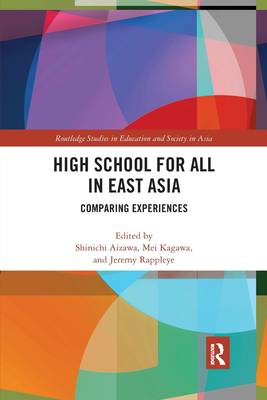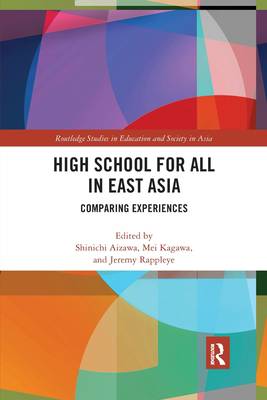
- Retrait gratuit dans votre magasin Club
- 7.000.000 titres dans notre catalogue
- Payer en toute sécurité
- Toujours un magasin près de chez vous
- Retrait gratuit dans votre magasin Club
- 7.000.000 titres dans notre catalogue
- Payer en toute sécurité
- Toujours un magasin près de chez vous
High School for All in East Asia
Comparing Experiences
Description
Although late to industrialize, East Asia has witnessed rapid development whilst maintaining some of the highest educational enrollment rates and indicators of academic achievement globally. From major players, such as China, to small city-states, such as Singapore, economic success and the growth of education have seemingly unfolded simultaneously. This book seeks to better understand the relationship between these powerful economies and their commitment to educational expansion.
Exploring the universalization of upper secondary schooling, it assesses the social foundations of the region's economic development. Chapters covering each of the countries of East Asia trace how upper secondary school functions as the support for the mass manufacturing labor force, which has been instrumental in East Asian economic expansion. These analyses then compare the experiences of the different nations along two major axes: the relationship between public and private provision and the balance between general and vocational tracks. Finally, the analyses go on to examine recent trends, including the slowing of social development and declining fertility, and ultimately asks, can East Asia maintain its world leading development and educational standards in coming decades?
Combining a wealth of quantitative data and policy analyses, this book will be useful to students and scholars of Asian and international education.
Spécifications
Parties prenantes
- Editeur:
Contenu
- Nombre de pages :
- 278
- Langue:
- Anglais
- Collection :
Caractéristiques
- EAN:
- 9780367894627
- Date de parution :
- 06-12-19
- Format:
- Livre broché
- Format numérique:
- Trade paperback (VS)
- Dimensions :
- 156 mm x 234 mm
- Poids :
- 394 g






